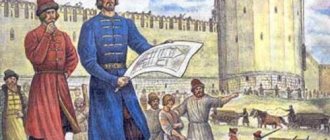Many people believe that organizing a party in the Russian national style is much easier than in any other style. After all, no matter how, every person knows the history of their country and imagines what national costumes and treats look like. But this is far from true. To organize this party, you need to make every effort and knowledge so as not to fall flat on your face. If in organizing any other themed party, be it from a movie or a national, but different culture, you can miss something or not know, then in your own national style there is nothing to miss.
First of all, you need to think about where this celebration will take place. Almost any room : from a sauna to an office. But, a country house or a room at home is best suited. The most important thing here will be to create a festive atmosphere and decorate the room in the appropriate style. The main attributes could be approximately the following things:
- decorating walls with straw and hay; -various fragrant herbs in bags (lavender, lemon balm, mint). They can be hung somewhere in the corner of the room. — embroidered towels; - objects of Old Church Slavonic life (poker, large shovel for the stove, brooms made of birch branches); - bundles of onions and garlic; - pottery on the tables; - samovar.
Party in Greek style - Immerse yourself in the atmosphere of Greece.
Suits
An important aspect of the party is the selection of costumes for the guests.
To make the right choice, you should turn to the history of your country. After all, each country has its own national style, which in the modern era has become forgotten. And, as for Russian, here it is very rich and diverse. Already starting with clothes, you can notice the breadth of the Russian soul. So, you need to start preparing the costumes. First, count the number of guests: how many women and how many men. There is no need to sew such clothes. It's worth renting . It’s good if you manage to come to an agreement with some theater, because it is there that the most correct costumes of the national style are collected. The basis for a women's suit will be a long-sleeved shirt, red or white. The shirt can be decorated with antique patterns in the form of trim or embroidery. A long or short sundress is worn on top of such a shirt. You can put a kokoshnik on your head or tie a ribbon. Hair can be braided. Also don't forget about shoes. Bast shoes are a good fit here - these are low shoes, they were woven from wood or wicker. To keep the shoes in place, they tied them to the feet with laces, also made from lyca. You can use shoes or boots. For men, a shirt with wide and long sleeves and pants are also taken. Here the men's suit is less varied than the women's. To give it a more elegant look, you can wear a caftan. tafya on your head . This is a small round hat. There are also murmurs and three-headed caps.
Decor
There are no particular difficulties, but there are a lot of details. Ask your friends to sort out the mezzanine and dacha supplies - probably something suitable for decoration in the Russian folk style is stored there.
If not, arm yourself with cardboard and paints, print and glue the images. Buy wallpaper, paper, napkins and fabrics with national patterns. Suitable for decoration:
- wildflowers, sunflowers, poppies, straw, bouquets of ears of corn;
- bunches of bagels, onions and garlic, rowan beads, aromatic herbs in bouquets or bags;
- wicker, clay and wooden dishes, barrels and tubs, pots and, of course, a painted samovar;
- to hide inappropriate wallpaper, Pavlovo Posad shawls and Zhostovo trays are ideal;
- bast shoes can be hung on the walls or used together with felt boots as vases for compositions;
- nesting dolls, wood carvings (toys, dishes, paintings), real Khokhloma and Gzhel will not only add Russian folk flavor to the room. But they will certainly attract the attention of party guests, so you can arrange a mini-exhibition;
- cardboard “claws”, eyes from an old soft toy, several cheap rugs with long pile. Cut, sew from the inside out - the bear skins are ready;
- weave a decorative fence from twigs. Miniature, as part of the compositions;
- Ask your friends for “grandmother’s” striped rugs. They will fit perfectly, and will also distract attention from modern parquet;
- balalaikas, harp, spoons, bells, button accordion, etc. Of course, it’s difficult to find real tools, but making them out of cardboard and painting them is easy. They are useful for photos and artistic scenarios – they will add ambiance.
The stove is a chic photo zone for a themed party in Russian folk style! For example, cardboard, painted or photo wallpaper. But we recommend a partially functional option:
- A rectangular table, the most common one. Cover the perimeter to the floor with thick cardboard or plywood on all sides;
- Cut out a semicircle-firebox from the “facade”, near the floor. Adjust the paper “fire”, put in a few logs, put on the cast iron;
- Make a pipe out of the box and tape it to the table top;
- Cover everything with white wallpaper to look like stone or plaster;
- Decorate the “oven” with floral ornaments, for example, wallpaper edging.
On such a stove you can pose for a photo (lying straight or sitting, like Emelya!) or put treats on it. It will turn out very atmospheric!
Invitations
When the costumes are finished, you need to write invitations. To do this, you should use parchment paper to give the invitations a more antique look. It's worth writing in ink. Try to make as many curls as possible in the letters. Invitations can be drawn up as follows: Charter.
“I (indicate your name and patronymic) decree that you (name and patronymic of each guest) will appear for the celebration (for what reason) in my chambers (indicate the address and date of the party). Be so kind as to come and taste the treats from my place, take with you a good mood and the breadth of the Russian soul.”
Menu
The next stage will be a festive feast. It's worth taking a full stroll here. All holidays in Rus' were famous for their very rich treats. Russian cuisine has absorbed elements of peasant, Old Church Slavonic cuisine, as well as dishes of different peoples who inhabited the Russian land. A themed celebration cannot be complete without dishes such as roasted pig or goose. Dishes made from wild animals or birds also fit well. Pancakes with various fillings are also considered a special dish. Don't forget about pies with fish and meat filling. Pies can also be served with sweet fillings: cottage cheese, berries and fruits. A special appetizer will be pickles: cucumbers, tomatoes, canned mushrooms, sauerkraut. Fried or baked potatoes are usually suitable as a side dish. But you can also serve porridge. The most popular is barley porridge. You should also not forget about mead, moonshine and kvass. For dessert, serve sweet gingerbreads, pastries made from yeast dough, pancakes with honey. Serve these desserts with tea. will be a good addition to the festive table paraphernalia . It’s good if it fulfills its main purpose, and not just complements a beautiful interior. Learning to use it is not at all difficult. Use wooden and clay dishes.
Oscar themed party.
Happy birthday greetings in Old Church Slavonic
Information came to me, but was left for later, as not important. And here, answering his question, several interesting points came up in the stream.
I will say right away that the tradition has changed over time and space. Initially, the birthday was not celebrated. However, there were celebrations of several events associated with this day.
And the first, the birth itself (the appearance of a new person in the family). The whole race gathered to welcome the emergence of life. Naturally, on this day the Gods were glorified; first of all, gifts were intended for them.
The gifts were divided into three parts: one went to the Gods, a part remained for people (treats), and the third part was intended for the baby.
Beach season. All is ready? “Get your sleigh ready in summer!” - says popular wisdom. Here.
Lesson eleven ———————————— Sewing with sparkles and sequins ———.
Party scenario in Russian folk style
It doesn’t matter in what order your party will take place, but another important stage of this evening should be entertainment. The Russian people love not only to eat delicious food, but also to have good fun. Stock up on good songs and ditties . They can be performed without leaving the table. And if you really want to, you can dance.
A quiz can be a very good game . You, as the party organizer, take on the role of host and explain the song in words, talk about the main characters and their actions, and the guests guess. After that, they must perform a verse or two from the guessed song. The gift can be a disc with folk songs or ditties. You can also organize a competition for knowledge of characters from folk tales. Guests are divided into two teams. Each team takes turns calling out the characters' names. The last team to answer wins.
Another very interesting game is tug of war . There is nothing complicated here. You just need to divide into two teams and correctly distribute men and women. The forces must be relatively equal. On the command for one, two, three, two teams begin to pull the rope, each in its own direction. Whoever wins will naturally win. Pillow fight. The main strategy here will be the ability to move well and feel how the enemy moves. You only need to play with one hand. The second hand rests on the lower back. To avoid any chaos, you need to share in pairs.
We all come from childhood and remember well the entertaining game “ Rivek ”. All participants in the game are divided into pairs, preferably opposite sexes. Having divided into two columns, you need to hold hands and lift them to the top, thus forming a tunnel. The number of players must not be even. The driver enters the corridor and chooses a mate, breaking the old one. The new couple stands on the opposite side of the tunnel, and the freed person becomes the driver and everything repeats again. There are no winners in this game. Simply, the faster the stream flows, the more fun it is. Play until you get bored.
Another fun activity will be the team competition “ Victory over the Serpent Gorynych ”. For this entertainment you will need a lot of fake chain mail, swords and toy wooden horses on sticks. Balloons should be painted to match the heads of the Serpent Gorynych. These heads should be placed on two chairs, approximately 10 meters away from the participants. Participants are divided into teams of five people. The first participant from one team and the first from the other team puts on fake chain mail, takes a sword and “mounts” the horse. They must race to the chairs and cut off the Serpent's head, then return and pass the baton to the second player. The team that finishes the fastest wins.
Superhero themed party! What is your favorite superhero?
A similar entertainment could be the “ Bath ” competition. For this competition you need to take several basins, bath caps, brooms and sheets. Several participants go to the middle of the room to the music. At the same time, they must dance and slap themselves on the back with brooms. As soon as the music stops, the participants quickly put on a bath cap, wrap a sheet around them and stand in the basin. Whoever does it faster wins.
If the party is taking place in winter, somewhere in a country house, then for a thrill it’s worth going on a sleigh . This will be good outdoor fun. If you have two pairs of sleds, you can conduct these rides as competitions. Whoever slides down the hill the fastest is the winner. Below you can arrange a small table with drinks, such as mead or moonshine. Warm wine is good for girls. You can add cinnamon, cloves and vanilla sugar there. Everyone who comes down first is “rewarded” with some kind of drink. This will give you a fighting spirit and help you warm up.
Login to the site
谢尔盖*Babichev Sergey Alexandrovich7 secrets of Russian greetingsocium Health of the nation, Life, Culture
According to one version, the name “Slavs” comes from the word “glorify”. This seems undeniable, because every Russian greeting is a doxology, even if it is silent.
Pre-Christian greetings
In fairy tales and epics, heroes very often greet fields, rivers, forests, and clouds. People, especially young people, are told: “Hey you, good fellow!” The word goy is very old; this ancient root is found in many languages. In Russian, its meanings are associated with life and life-giving force, and in Dahl's dictionary goit means “to fast, to live, to live.” But there is another interpretation of the greeting “Go you!”: some researchers argue that this phrase indicates belonging to the same community, clan, tribe and can be translated as: “You are ours, of our blood.” So, the word “goy” means “to live,” and “esi” means “to eat.” Literally, this phrase can be translated into modern Russian as follows: “You exist now and still be alive!” Interestingly, this ancient root is preserved in the word outcast. And if “goy” is “to live, life,” then “outcast” is its antonym - a person cut off from life, deprived of it.
Another common greeting in Rus' is “Peace to your home!” It is unusually complete and respectful, because in this way a person greets the house and all its inhabitants, close and distant relatives. Perhaps in pre-Christian Rus', such a greeting also meant an appeal to the brownie and the god of this kind.
Christian greetings
Christianity gave Rus' a variety of greetings, and from then on, from the very first words spoken, it became possible to determine the religion of a stranger. Russian Christians liked to greet each other like this: “Christ is in our midst!” - and answer: “It is and will be!” Byzantium is dear to Rus', and the ancient Greek language feels almost native. The ancient Greeks greeted each other with the exclamation “Hayrete!”, which meant “Rejoice!” - and the Russians followed them in accepting this greeting. "Rejoice!" - as if a person begins a hymn to the Most Holy Theotokos (after all, this is exactly the refrain that is found in hymns to the Theotokos). Another greeting that emerged during this time was more often used when passing people at work. “God help you!” - he said then. “For the glory of God!” or “Thank God!” - they answered him. These words, not as a greeting, but more often as just a wish, are still used by Russians to this day.
Surely not all versions of ancient greetings have reached us. In spiritual literature, the greeting was almost always “omitted” and the characters went straight to the essence of the conversation. Only in one literary monument, the apocrypha “The Tale of Our Father Agapius” from the 13th century, is there a greeting from that time that surprises with its poetry: “Walk well, and good will be your path.”
Kisses
The triple kiss, preserved in Russia to this day, is a very old tradition. The number three is sacred, it is both completeness in the Trinity, and reliability and protection. Guests were often kissed this way - after all, a guest for a Russian person is like an angel entering a house. Another type of kiss is the kiss of the hand, which meant respect and admiration. Of course, this is how those close to him greeted the sovereign (sometimes kissing not even his hand, but his foot). This kissing is also part of the priest’s blessing, which is also a greeting. In the church, they also kissed the one who had just received the Holy Mysteries of Christ - in this case, the kiss was both congratulations and a greeting to a renewed, cleansed person. The sacred, and not just the “formal” meaning of kisses in Rus' is also evidenced by the fact that not everyone was allowed to kiss the hand of the sovereign (ambassadors from non-Christian countries were prohibited from doing so). A person of lower status could kiss a higher one on the shoulder, and he could kiss him on the head. After the revolution and during Soviet times, the tradition of greetings and kisses weakened, but is now being revived again.
Bows
Bowing is a greeting that, unfortunately, has hardly survived to this day. In Rus' it was customary to bow when meeting. But the bows were also different.
The Slavs greeted a person respected in the community with a low bow to the ground, sometimes even touching or kissing it. This bow was called the “great custom.” Acquaintances and friends were greeted with a “small custom” - a bow from the waist, and strangers with almost no custom: putting a hand to the heart and then lowering it down. It is interesting that the gesture “from the heart to the earth” is originally Slavic, but “from the heart to the sun” is not. Placing a hand to the heart accompanied any bow - this is how our ancestors expressed the cordiality and purity of their intentions.
Any bow metaphorically (and physically too) means humility before your interlocutor. There is also a moment of defenselessness in it, because a person bows his head and does not see the person in front of him, exposing him to the most defenseless place of his body - his neck.
Embrace
Hugs were common in Rus', but this type of greeting also had variations. One of the most interesting examples is the male “heart to heart” hug, which, at first glance, shows the complete trust of men in each other, but in reality indicates the opposite, because this is how men checked whether a potential dangerous rival had weapons. A separate type of hug is fraternization, a sudden cessation of hostilities. Relatives and friends hugged, as well as people in the church before confession. This is an ancient Christian tradition that helps a person tune in to confession, forgive others and ask for forgiveness himself (after all, in churches then there were people who knew each other well, and among them were offenders and offended people).
Handshakes and hats
Touching hands is an ancient gesture that communicates a lot to interlocutors without a single word. You can tell a lot by how strong and long a handshake is. The duration of the handshake is proportional to the warmth of the relationship; close friends or people who have not seen each other for a long time and are happy to meet could make a warm handshake not with one hand, but with both. The elder was usually the first to extend his hand to the younger - it was as if he was inviting him into his circle. The hand must be “bare” - this rule has been preserved to this day. An open hand shows trust. Another option for shaking hands is touching with the hands rather than the palms. Apparently, it was common among warriors: this is how they checked that those they met on their way did not have weapons with them, and demonstrated their lack of weapons. The sacred meaning of such a greeting is that when the wrists touch, the pulse, and therefore the biorhythm of the other person, is transmitted. Two people form a chain, which is also important in the Russian tradition.
Later, when rules of etiquette appeared, only friends were allowed to shake hands. And in order to greet distant acquaintances, they raised their hats. This is where the Russian expression “casual acquaintance” comes from, meaning superficial acquaintance.
"Hello" and "Hello"
The origin of these greetings is very interesting, since the word “hello,” for example, cannot be reduced simply to the word “health,” that is, health. Now we perceive it exactly like that: as a wish for another person to have health and long life. However, the root “zdrav” and “zdrov” is found in ancient Indian, Greek, and Avestan languages. Initially, the word “hello” consisted of two parts: “Sъ-” and “*dorvo-”, where the first meant “good”, and the second was related to the concept of “tree”. What does the tree have to do with it? For the ancient Slavs, a tree was a symbol of strength and prosperity, and such a greeting meant that a person wished another this strength, endurance and prosperity. In addition, the greeter himself comes from a strong, strong family. This also proves that not everyone could say “hello.” Free people, equal to each other, were allowed this, but slaves were not. The form of greeting for them was different - “I hit you with my forehead.” Researchers found the very first mention of the word “hello” in a chronicle dated 1057. The author of the chronicles wrote: “Hello, many summers.” The word “hello” is easier to decipher. It also consists of two parts: “at” + “vet”. The first is found in the words “caress”, “incline” and means closeness, approaching something or someone. The second is in the words “advice”, “answer”, “news”... By saying “hello”, we show closeness (and indeed, we only address close people this way) and, as it were, convey good news to another.
Photo
Check out our full list of themed parties!
Did you like the article? Like it!






